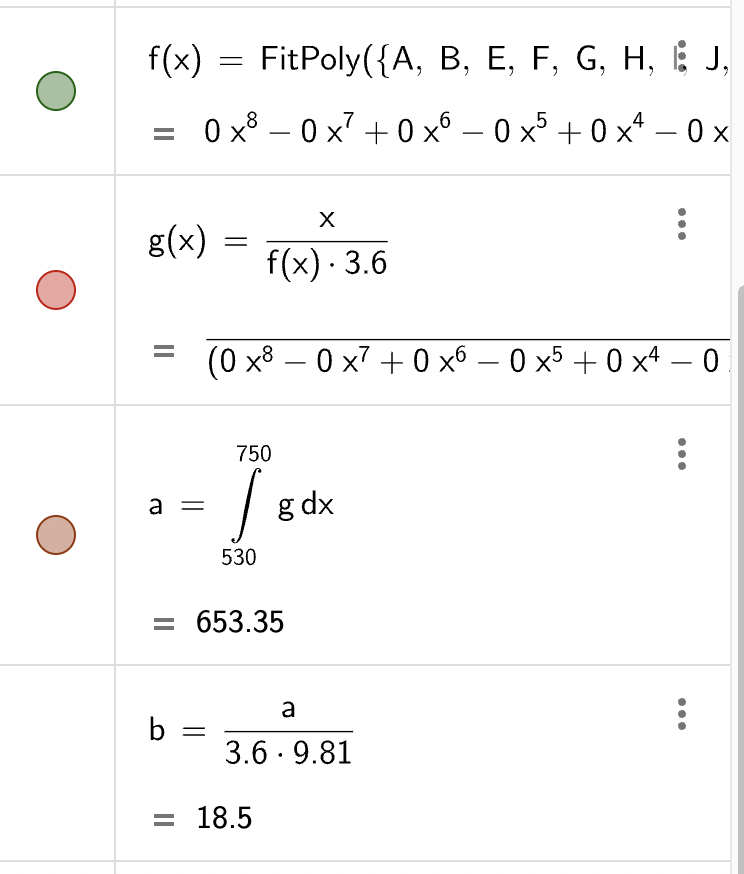Su-32 has pesa Sh-141 radar.
Quick Google search seems to suggest that it is indeed equipped with V004 PESA radar.
Are you using fully manual? Or with dampening? Looks like theres a funny thing in that - according to some messages it retents energy worser on dampening
Can you test it again?
Testing it with or without dampening does nothing to modify the flight model, it only clamps control responses via instructor. In the past I tested sustained and instant turn rate with dampening and without - the only change is the greater ability to pull AoA without, and a slightly higher responsiveness.
Thank you very much for the test:

Since the chart didn’t quite cover 500kph and also interpolation isn’t perfect I took the time from 530 kph to 750 kph… theoretical time is 18.5 seconds, test time ~13.5 seconds… need to look it further when it’s less late but looks like we have a case…
Flagged for spam
I don’t see where you are getting the time to accelerate from the chart, is it more or less just the excess power /s added until it reaches the desired speed for datapoint?
Specific excess power is a fancy term (and way) to simply measure how much energy is gained in every infinitively small interval of time, in mathematical terms Specific excess power is the derivative of energy over time . The reasons it’s measured in m/s (or ft/s for freedom units) are:
It’s called Specific because the energy gain is divided by gravitational constant and aircraft mass (kinda like Ny is just normal force divided by mass and grav. constant).
All energy is assumed to be potential (energy is still energy and a part of the one indicated in the sep chart (as in our case since altitude is constant) could be kinetic, but the total amount doesn’t change whatever the composition of kinetic and potential is).
Gravitational potential energy formula: m\,g\,h .
This means that: SEP = \frac{\dfrac{d}{dt}m\,g\,h}{m\,g} = \dot h.
Now in our case all potential energy becomes kinetic, so I equal the two and take the derivative over time of both and equal them:
m\,g\,h = \dfrac{1}{2}\,m\,V^2
\dfrac{d}{dt}m\,g\,h = m\,g\,\dot h = m\,g\,SEP(V) and \dfrac{d}{dt} \dfrac{1}{2}\,m\,V^2 = m\,V\,\dot V
m\,g\,SEP(V) = m\,V\,\dot V
Then i change notation for the derivative of speed (acceleration) from (\dot V ) to \dfrac{dV}{dt} and then solve the diff. equation.
\dfrac{dV}{dt} = \dfrac{g}{V}\, SEP(V)
\displaystyle\int_{v_0}^{v_f} \dfrac{V}{SEP(V)}\;\mathrm{d}v = \displaystyle\int_{t_0}^{t_f} g\,\mathrm{d}t .
\dfrac{ \displaystyle\int_{v_0}^{v_f} \dfrac{V}{SEP(V)}\;\mathrm{d}v }{g} = t_f -t_0
I’ve interopolated SEP(v) from the chart and then let the computer solve the integral for me. (I’ve divided by 3.6 a couple of times because chart x axis is in kph and not in m/s). Then i divided by g to find time interval.
Edit:
The “g” under the integral here is the function g(x) above which is V/SEP(v) (x is speed and f(x) is SEP interpolation) and not “g” gravitational constant.
What are the implications of this in regards to the FM or making a report?
Significantly improved low speed sustained turn rate and energy retention
I would like a tech mods reaction to this, are we wasting our time still or will the devs be willing to adjust the FM based on this new information. If not, how many discrepancies must be found until they determine it is worthwhile? 5? 10? 20?
It would trade acceleration/energy gain in slight turns (and some low speed climb ability) for more energy retention when pulling hard
It is sad, Gaijin and bvvd being originally based out of Russia, I would imagine that they would want to take action as soon as possible to evaluate reports on inaccuracies on the Flanker.
We do not know where the current flight model devs are from, but they seem to be abhorrent as of late. Ever since the introduction of more modern fighters where their flight model is stretched to the limits - they have been quite awful.
It seems that the values for vehicles like MiG-29 and Su-27 are definitely on the lower end of matching their EM diagrams, while for vehicles like F-16, they are quite optimistic.
That’s why i don’t even get excited anymore when they announce a new plane, even if it’s an iconic one (like the su34 which is rumoured to be added on the next update), because it means more trash being accumulated, thus lowering the chances of fixing vehicles added on past updates.
They openly admitted the primary reason they don’t want to fix the F-5 series is because they are already “old FM’s”
how would that change things given the su34 also is a flanker? not to mention it follows the common theme of taking a decent successful air-frame add a ton of avionics strengthening the air-frame
and voila your turned your fighting into a cas bus
mig27 and mig29smt comes to mind
also the su34 comes with the luxury of 2 comrades sitting side by side
the su34 weights 37% more than the su27 if the Wikipedia numbers are accurate and brings more fuel
the gross weight of the su34 exceeds the maximum take of weight from the su27
Missing the point of his statement entirely only to ruin yours by making it clear that it will be an entirely different FM.
Things that surprise nobody for 500 please.
different yes but worse
its pretty much the mig29 vs mig29smt situation all over again the su34 might have a more instantaneous turn rate given the canards but the main problem people seam to have with the su27 which is energy preservation in turns, will get worse
Which again, means that they will likely continue to avoid fixing the FM’s.
